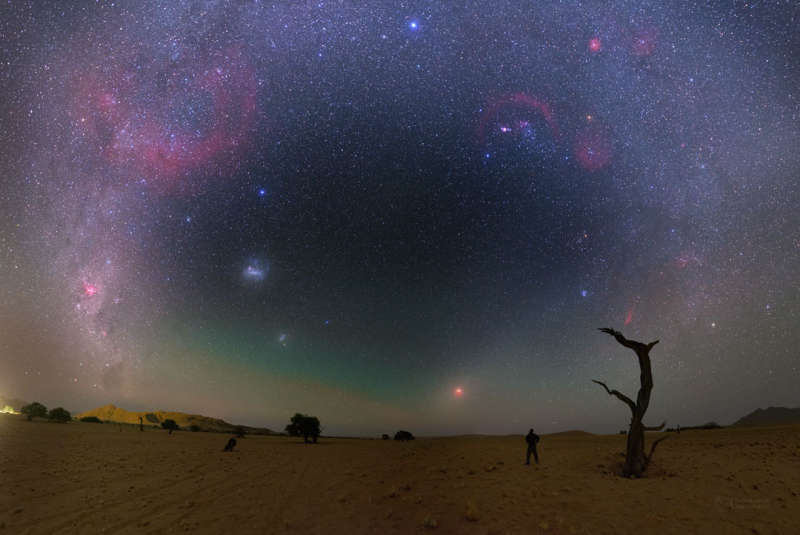
|
Credit & Copyright: Petr Horюlek;
Rollover Annotation: Judy Schmidt
Explanation:
Is there anything interesting to see in the direction opposite the Sun?
One night last month, there were quite a few things.
First, the red-glowing orb on the lower right of the
featured image
is the full moon, darkened and reddened because it has entered Earth's shadow.
Beyond Earth's
cone of darkness are backscattering dust particles orbiting the Sun that standout
with a diffuse glow called
the gegenschein,
visible as a faint band rising from the
central horizon and passing behind the Moon.
A nearly horizontal stripe of
green airglow is
also
discernable just above the horizon, partly blocked by
blowing orange sand.
Visible in the distant sky as the blue dot near the top of the image is the star
Sirius,
while the central band of our
Milky Way Galaxy arches
up on the image left and down again on the right.
The fuzzy light patches just left of center are the
Large and
Small Magellanic
Clouds.
Red emission nebulas too numerous to mention
are scattered about the sky,
but are labelled in a
companion
annotated image.
In the image foreground is the desolate
Deadvlei region of the
Namib-Naukluft
National Park in
Namibia, featuring the astrophotographer
himself surveying a
land and sky
so amazing
that he described it as one of the top experiences of his life.
Quiz: Astronomy Picture of the Day Caption or Harlequin Novel?
|
January February March April May June July August September October November December |
| ||||||||||||||||||||||||||||||||||||||||||||||||
NASA Web Site Statements, Warnings, and Disclaimers
NASA Official: Jay Norris. Specific rights apply.
A service of: LHEA at NASA / GSFC
& Michigan Tech. U.
Based on Astronomy Picture
Of the Day
Publications with keywords: lunar eclipse
Publications with words: lunar eclipse
See also:
